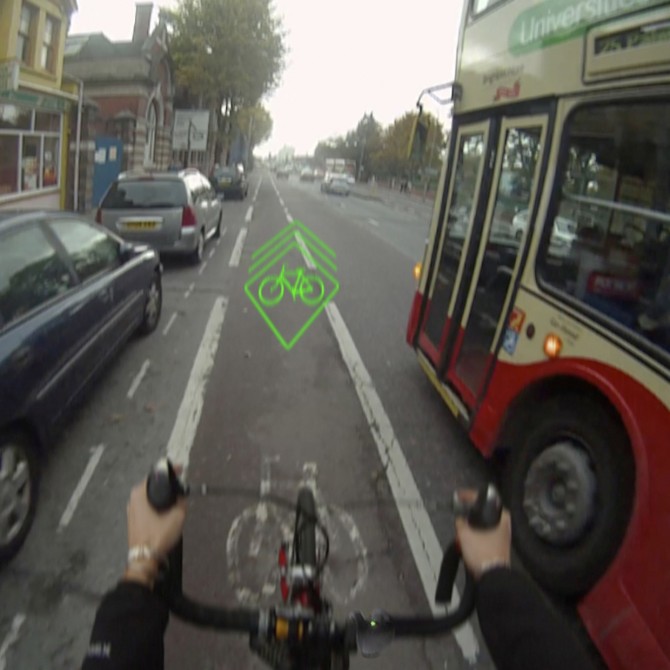Many people are afraid of riding their bicycles on busy roads full of motorized vehicles, and it’s easy to understand why. Not only are bikes slower and offer less protection than cars, but they can also be more difficult for drivers to notice. A device invented by a British design student, however, could help level the playing field a little. It’s called BLAZE, and it alerts drivers to the presence of a cyclist by projecting a laser image onto the road in front of the bicycle.
“Eighty percent of cycle accidents occur when bicycles travel straight ahead and a vehicle maneuvers into them,” said Emily Brooke, a final-year Product Design student at the University of Brighton. “The most common contributory factor is ‘failed to look properly’ on the part of a vehicle driver. The evidence shows the bike simply is not seen on city streets.”
She designed BLAZE in order to get those cyclists seen. The device mounts on the handlebars of a bicycle (or a motorcycle or scooter), from where it shoots a bright green sharrow (shared lane) symbol onto the road, several feet ahead of the cyclist. That symbol is visible even in daylight, and can be made to flash on and off.
The idea is that motorists, even if they don’t see the actual cyclist riding in their blind spot, will notice the image on the road and realize that a cyclist is behind/beside them.
Brooke consulted with road safety experts, Brighton & Hove City Council, the Brighton & Hove Bus Company and driving psychologists when designing BLAZE. The resulting invention has won her a paid-for course at Babson College in Massachusetts, where she will continue to develop the product. She has also been shortlisted for an Enterprise Award, for innovation.
“With BLAZE, you see the bike before the cyclist and I believe this could really make a difference in the key scenarios threatening cyclists’ lives on the roads,” she stated.
Emily’s idea is reminiscent of LightLane, a bicycle-mounted prototype device that uses lasers to project a virtual bicycle lane beside and behind the user’s bike. Instead of warning drivers that a cyclist is beside them, however, it’s intended more to get drivers to give cyclists enough room on the road.
Article Written By: Ben Coxworth of Gizmag.com


